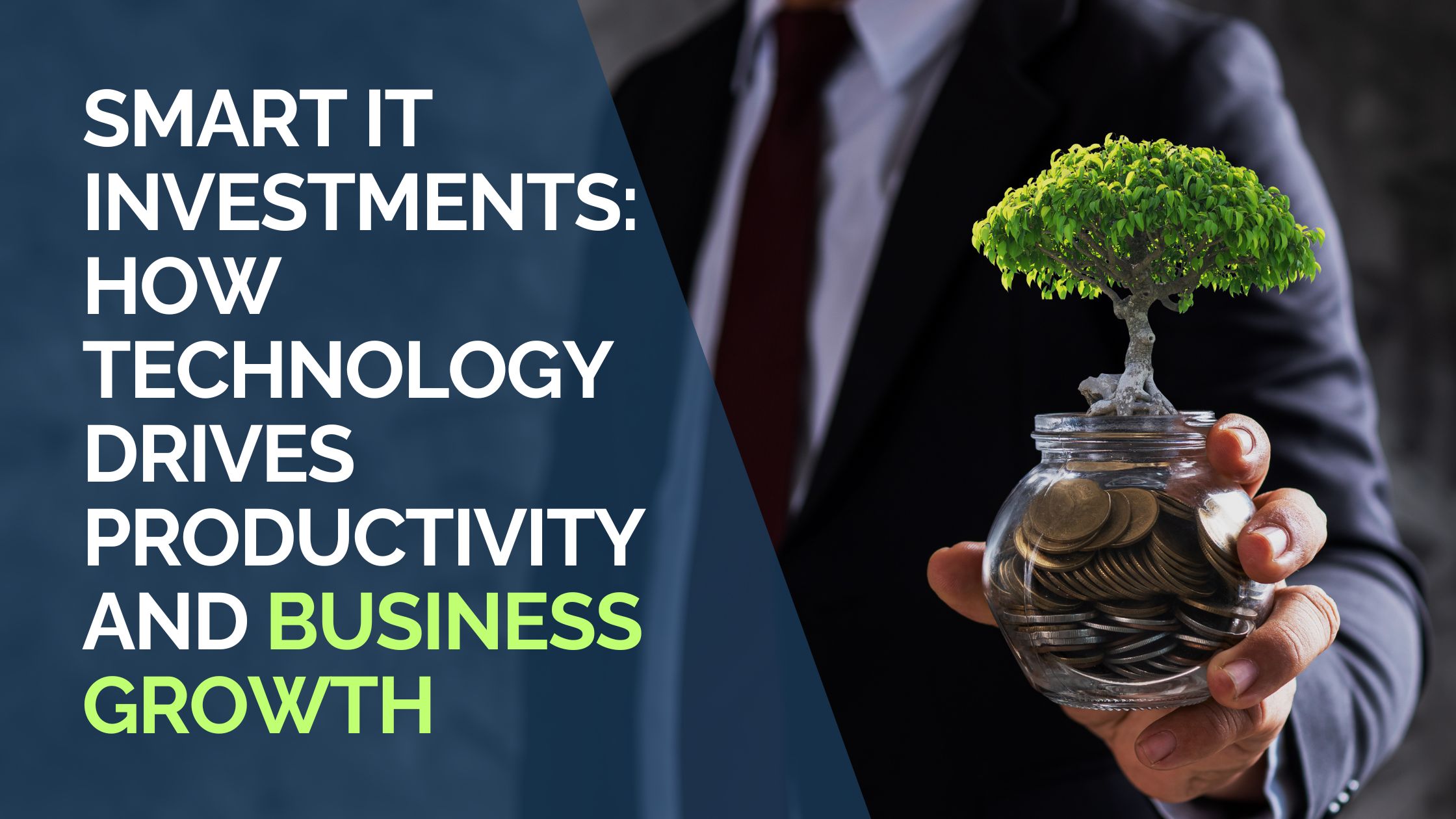Smart business managers share one responsibility above all others: allocate capital where it produces the greatest return. That means treating technology like any other investment opportunity.
The right tools and practices protect revenue, raise output, and strengthen brand reputation—all at a fraction of the cost of traditional capital projects.
Let’s talk about smart IT investments and specific instances where they’ve made a difference.
What Counts as a Smart IT Investment?
A smart IT investment does two things:
- Improves measurable business outcomes such as revenue per employee, turnaround time, or customer satisfaction.
- Reduces material risk that could threaten cash flow or brand value.
When those twin benefits align, technology spending moves from “overhead” to “growth engine.” Let’s look at where companies often miss the mark and how to course-correct.
Outdated Technology Drains Returns
Many organizations still pour money into legacy servers, dusty VPN appliances, and software that was “good enough” ten years ago. The motive is familiar—fear of change combined with limited strategic guidance—but the opportunity cost is enormous.
- Higher downtime: Hardware and operating systems beyond their intended lifespan fail more often and take longer to fix.
- Lower productivity: Older endpoints bottleneck modern applications, forcing high-value employees to wait on progress bars.
- Security exposure: Maintenance becomes harder as IT manufacturers and vendors end support, increasing the odds of a breach.
Lifecycle Management Pays Dividends
The simplest antidote is a formal device lifecycle plan. Many IT departments reference device lifecycle standards like those published by Intel or Gartner.
Budget 25% annual laptop replacements for your employees, year after year. Start with the oldest and go from there.
We can help produce a list of your IT assets and a list of equipment is one of the most commonly requested reports we produce for new clients.
Consistent refreshes preserve speed, reliability, and warranty coverage yielding a direct boost to employee throughput and a predictable expense line.
If you wouldn’t hire talent that still uses dial-up, why let them work on decade-old hardware?
Collaboration Tools Multiply Output
Productivity software only creates value when configured around real-world workflows. Microsoft’s own research shows that collaboration tools can improve team output by up to 20%, especially when configured correctly. Microsoft Teams, Planner, and To Do can tighten project cycles and cut meeting hours, but a “set it and forget it” rollout usually backfires.
One recent client had added a new Teams channel for every customer engagement, exposing sensitive data to everyone and burying actionable tasks in a tidal wave of notifications. It made sense at the time, but was not working now and had made a huge mess.
After restructuring Teams by department and applying access controls to keep people focused, the firm reported an estimated 25% increase in work time per employee. The investment was modest, primarily governance and light retraining, yet the payoff showed up in the next few payroll cycles.
Quick Wins to Target
- Department-centric channel architecture
- Built-in task boards with Planner
- Personal follow-ups in To Do, integrated with Outlook
- Quiet times and notification policies to curb noise
Each change requires thoughtful setup, not more software purchases.
The Hidden Costs of Doing Nothing
Executives often underestimate the reputational damage tied to cyber incidents. Insurance is important, but coverage can be denied if required controls—multifactor authentication, endpoint detection, regular patching—are missing. Beyond direct costs, consider three cascading effects:
- Client attrition as customers question data stewardship.
- Employee flight when their own personal records are exposed.
- Leadership distraction while founders and executives manage identity theft fallout.
According to the U.S. National Cybersecurity Alliance, 60% of small businesses close within six months of a cyberattack.
Ignoring upgrades isn’t a cost-saving tactic; it’s a gamble.
When Smart IT Investments Pay Back
Most cloud-first transitions deliver noticeable gains within six to twelve months. The timeline covers planning, staged rollout, and the cultural shift required to realize efficiencies. Key leading indicators include:
- Reduction in unplanned outages
- Faster onboarding of new staff
- Audit-ready compliance posture
- Improved net promoter scores from both customers and employees
Transformation moves faster when guided by a documented playbook—one that specifies configuration standards, ownership, and success metrics. Many providers sell tools; few bring a process proven across industries. That gap explains why similar budgets can yield vastly different outcomes.
Conclusion: Invest Where It Counts
Technology is no longer a sunk cost you depreciate over five years. Treated strategically, it is a portfolio of assets that compound value through risk reduction and productivity growth. The companies that adopt smart IT investments today will set the performance baseline for their markets tomorrow.
Next Step: Measure Your Growth Readiness
Curious how your current environment stacks up? Request your Growth Readiness Score and learn whether your business qualifies for our proven playbook of smart IT investments.



